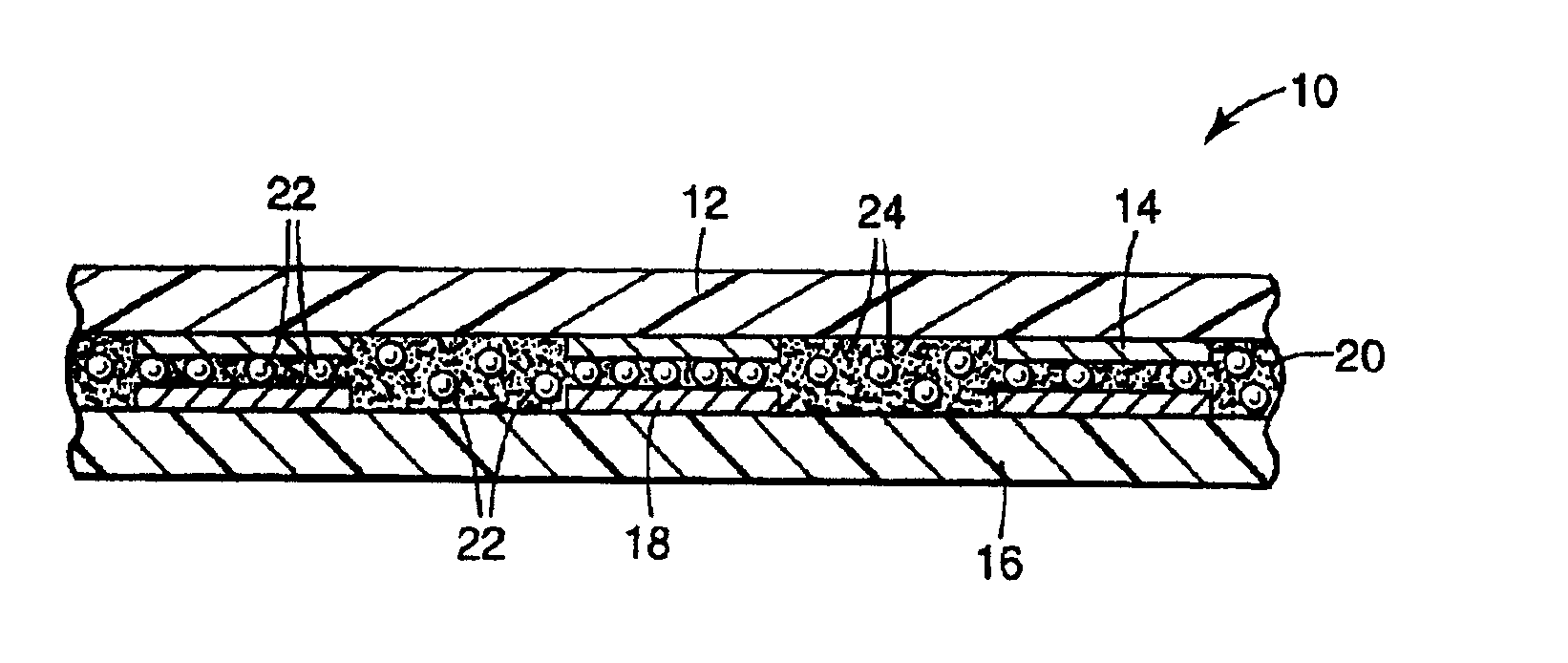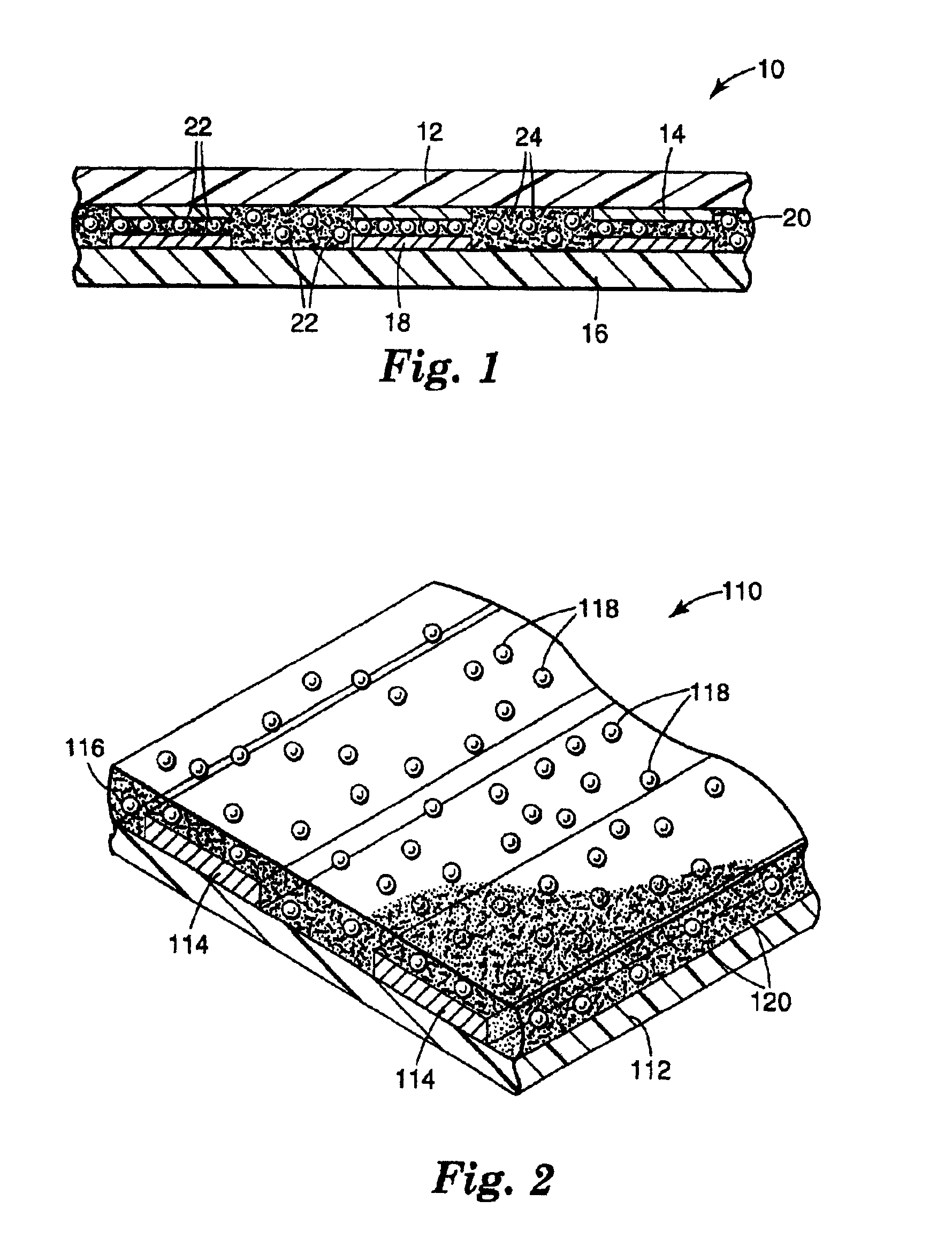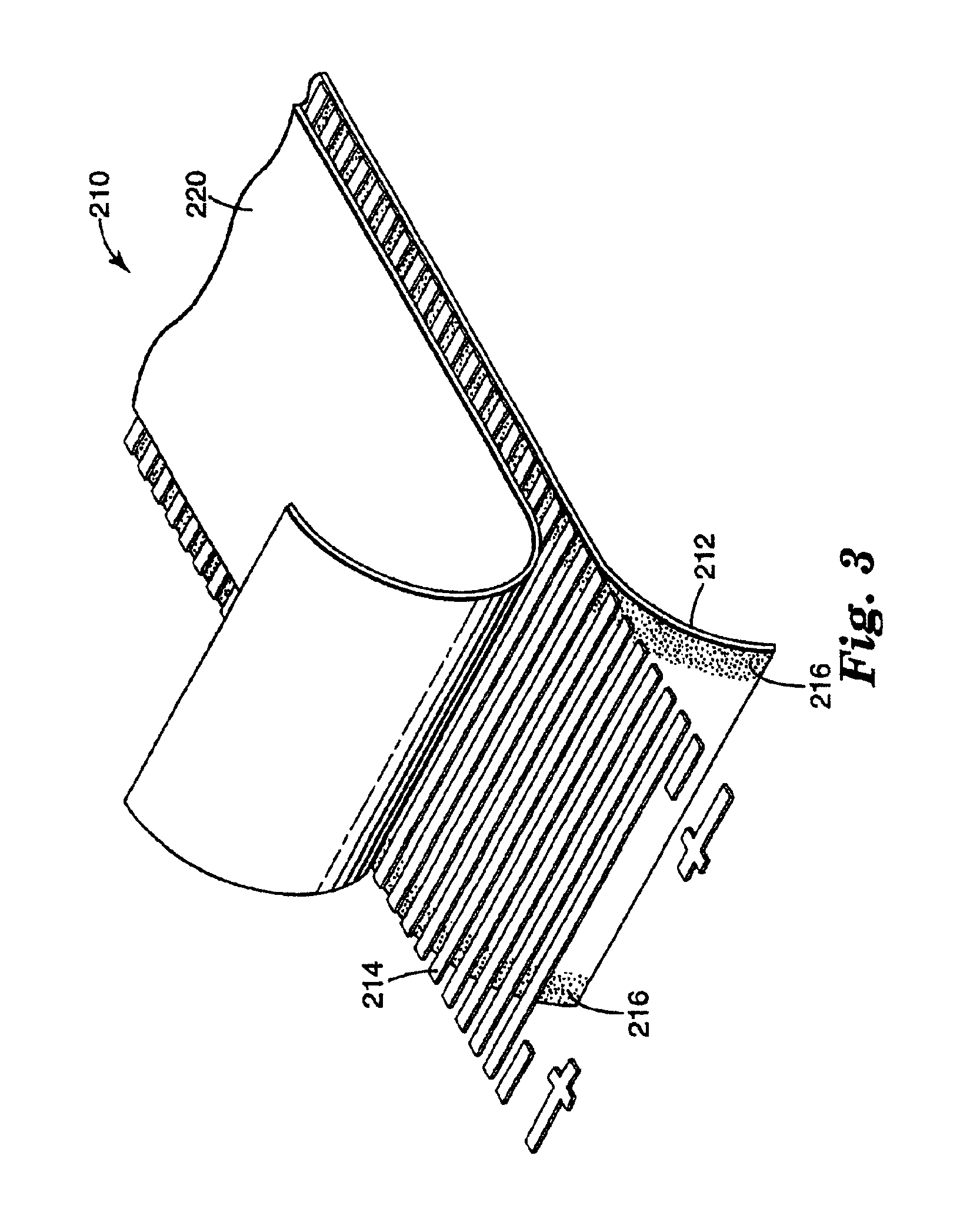Devices, compositions, and methods incorporating adhesives whose performance is enhanced by organophilic clay constituents
a technology of organophilic clay and composition, applied in the direction of film/foil adhesives, thermoplastic polymer dielectrics, non-conductive materials with dispersed conductive materials, etc., can solve the problems of substantial more creep resistance, and achieve rapid build-up of peel strength, improve adhesive properties, and increase the rate of recrystallization
- Summary
- Abstract
- Description
- Claims
- Application Information
AI Technical Summary
Benefits of technology
Problems solved by technology
Method used
Image
Examples
example 1
[0153]SCP CLOISITE 20A organophilically-modified montmorillonite, available from Southern Clay Products, Gonzalez, Tex., was added to a 50:50 mixture by weight of PEBAX 3533 polymer and SYLVARES 2040 tackifier such that the overall composition was 3 wt. % SCP CLOISITE 20A clay based on the total weight of the PEBAX polymer, plus SYLVARES 2040 tackifier plus SCP CLOISITE 20A clay.
[0154]The extruder of Comparative Example 1 was used to compound the material. Zones 1-8 were set to 229° C., Zone 9 was set to 221° C., and Zone 10 was set to 210° C. PEBAX 3533 polymer was added through an open port in the Feed Zone, SYLVARES 2040 tackifier was added through an injection port in Zone 2, and SCP CLOISITE 20A clay was added through an open port in Zone 4. Total throughput was 9.4 kg / hr (20.7 lbs / hr).
[0155]The compounded material was fed to the drop die of Comp. Ex. 1 and coated as described in Comparative Example 1 to provide the base film of Ex. 1.
[0156]The conductive adhesive film of Examp...
example 2
[0157]The film of Ex. 2 was prepared using the components and procedure of Ex. 1, except that the amount of SCP CLOISITE 20A clay was 11.1 wt % and the throughput was 10 kg / hr (22.25 lbs / hr). The conductive adhesive film of Ex. 2 was evaluated according to the test methods outlined hereinabove for 90 Degree Peel to Printed Circuit Board, 90 Degree Peel to Plain FR4, and Cavitation Voids. The base film of Ex. 2 was evaluated for Storage Shear Modulus at 150° C. Test results are reported in Table 2 below.
examples 3-4
[0158]SCP CLOISITE 30B clay (organophilically-modified montmorillonite, available from Southern Clay Products, Gonzalez, Tex.) was added to PEBAX 3533 polymer in the BRABENDER mixer and mixed for 10 minutes at a temperature of approximately 165° C. and a speed of 80 rpm.
[0159]A portion of the mixture was then removed, and SYLVARES 2040 tackifier was added and blended for 15-20 minutes at a temperature of approximately 150° C. and a speed of 80 rpm. The amounts of the components are given in Table 1.
[0160]The compounded material was pressed in a PHI Hydraulic Press Model TS21-H-C-8 (available from PHI, Pasadena, Calif.), set to a temperature of 140° C., and with a pressure gauge setting of 8896 newtons (2000 lbf). The film (between two release liners) was then pulled through a hot-knife coater with a temperature setting of 90° C. to provide the base film with a resultant film thickness within the range of 62.5 to 75 micrometers.
[0161]
TABLE 1ComponentEx. 3 (parts)Ex. 4 (parts)SYLVARES...
PUM
| Property | Measurement | Unit |
|---|---|---|
| particle size | aaaaa | aaaaa |
| particle size | aaaaa | aaaaa |
| average primary particle size | aaaaa | aaaaa |
Abstract
Description
Claims
Application Information
 Login to View More
Login to View More - R&D
- Intellectual Property
- Life Sciences
- Materials
- Tech Scout
- Unparalleled Data Quality
- Higher Quality Content
- 60% Fewer Hallucinations
Browse by: Latest US Patents, China's latest patents, Technical Efficacy Thesaurus, Application Domain, Technology Topic, Popular Technical Reports.
© 2025 PatSnap. All rights reserved.Legal|Privacy policy|Modern Slavery Act Transparency Statement|Sitemap|About US| Contact US: help@patsnap.com



